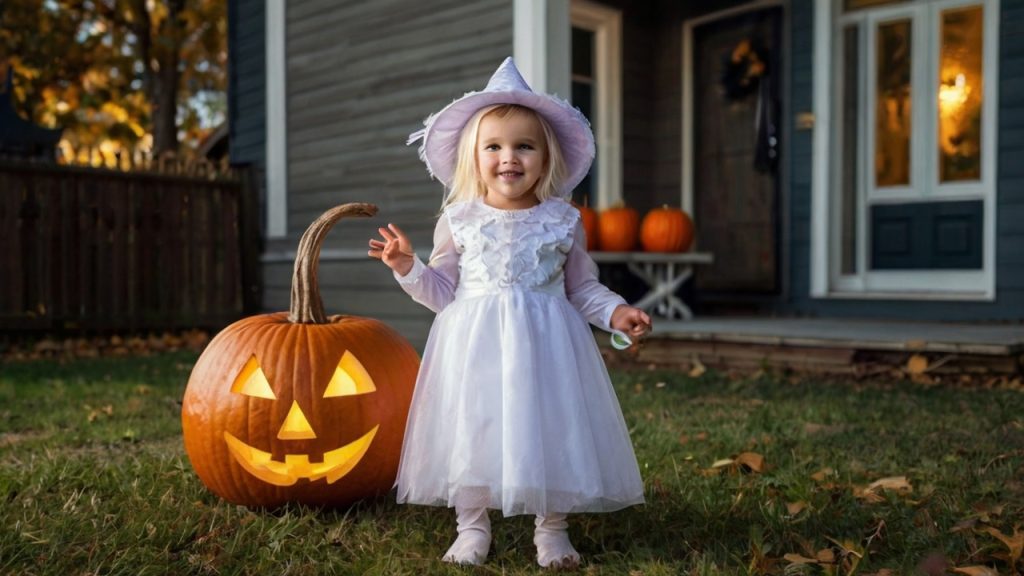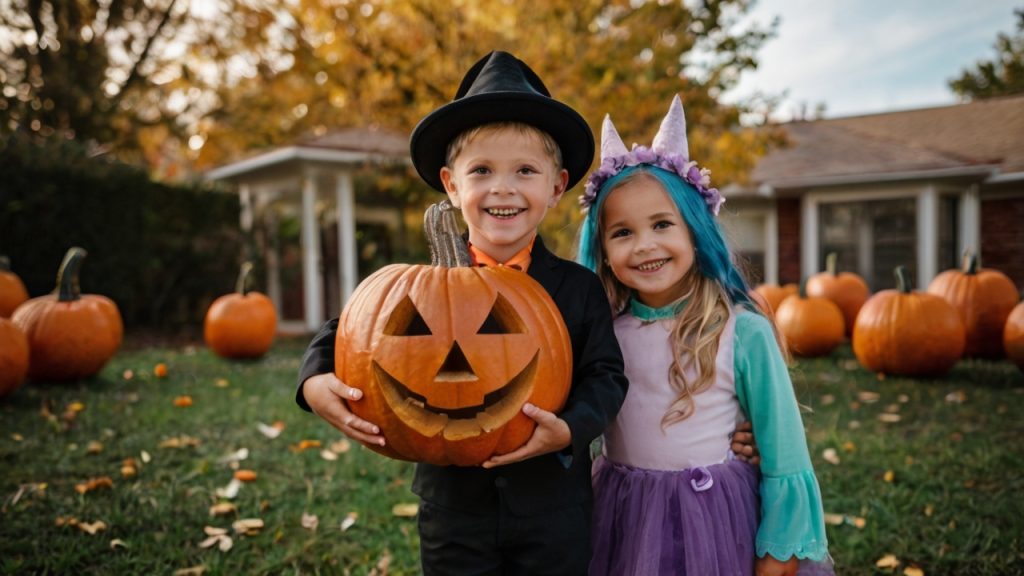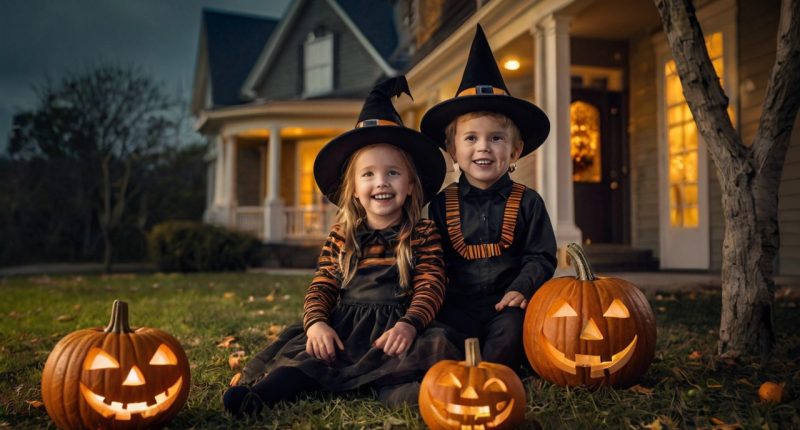Halloween is a festive day celebrated on October 31, 2024, where people of all ages engage in various activities such as dressing up in costumes, carving pumpkin lanterns, and going door-to-door for candies. The Halloween celebration has become a major cultural event, particularly in the United States, where it is associated with spooky themes, haunted houses, and playful activities. But beyond the modern festivities, Halloween has deep historical roots that date back centuries.
Table of Contents
What is the Origin of Halloween?
Halloween has its origins in the ancient Celtic festival known as Samhain (pronounced “sow-in”), which began over 2,000 years ago. Celebrated on October 31, Samhain marked the end of the harvest season and the beginning of winter; a time often associated with death and darkness. The Celts, who lived in what is now Ireland, the United Kingdom, and northern France, believed that on this night the line between the living and the dead was blurred, allowing spirits to return to the earth.
The Significance of Samhain
Samhain was a time when the Celts believed that the ghosts of the dead would return to the world, causing trouble and damaging crops. To honor and appease these spirits, the Celts would light large bonfires where they would burn crops and animals as sacrifices. The bonfires also served as a protective measure to keep evil spirits away. People would gather around these fires and wear costumes made from animal heads and skins to disguise themselves from the wandering spirits.
The Role of Druids and Divination
During Samhain, Celtic priests known as Druids played a central role in the celebrations. They believed that the presence of spirits from the other world made it easier to predict the future. Druids performed divination rituals, interpreting omens and foretelling events that would affect the community in the coming year. These prophecies provided the Celts with comfort and guidance during the long, dark winter months.
Roman Influence on Halloween
As the Roman Empire expanded and conquered Celtic lands, Roman festivals began to merge with Samhain. Two Roman festivals, Feralia and Pomona, were particularly influential. Feralia, celebrated in late October, was a day to honor the dead, while Pomona, goddess of fruit and trees, was celebrated with a festival involving apples. The popular Halloween game of apple-grabbing is believed to have originated from the Roman celebration of Pomona.
The Christianization of Halloween
In the 9th century, the spread of Christianity led to a further transformation of the Samhain festival. Seeking to replace pagan practices with Christian ones, the Church established All Saints’ Day or All Saints’ Day on November 1, a day to honor saints and martyrs. The evening before All Saints’ Day became known as All Saints’ Eve and later evolved into Halloween. This Christian holiday tried to replace the old pagan rituals, but many of the original Samhain traditions survived.

Halloween in America
Halloween as we know it today began to take shape in the 19th century when it was brought to the United States by European immigrants. These settlers brought with them various Halloween traditions, including the practice of “candling” or “disguising”, which involved dressing up in costumes and going door-to-door for food or money. Over time, these traditions evolved into the modern practice of “monster collecting”.
By the early 20th century, Halloween had become a widely celebrated holiday in America, with parties, games and iconic jack-o’-lanterns. The latter tradition, which involves carving faces into pumpkins, is based on an Irish legend about a man named Stingy Jack who tricked the devil and was condemned to wander the world with only a carved turnip to light his way.
Why is Halloween Celebrated?
Halloween is celebrated as a mixture of ancient traditions and modern cultural practices based on both pagan and Christian rituals. This holiday has its origins in the ancient Celtic festival of Samhain, which marked the end of the harvest and the beginning of winter. The Celts believed that on the night of October 31, the boundary between the living and the dead blurred, allowing spirits to cross over into the world of the living. To protect themselves from these spirits, they would light bonfires and dress up in costumes, a practice that formed the basis of many of the Halloween traditions we observe today.
As Christianity spread across Europe, the Church tried to replace pagan festivals with Christian ones. All Saints’ Day, or All Saints’ Day, was established on November 1 to honor saints and martyrs, and the evening before, known as All Saints’ Eve, gradually evolved into Halloween. Despite the Christian overlay, many of the original pagan traditions continued, such as wearing costumes and lighting candles to ward off spirits. Over time, Halloween has evolved into a celebration that combines elements of both its ancient origins and contemporary culture, becoming a night of community gatherings, costumes and festive activities.
How is Halloween Celebrated?
Halloween is celebrated with a variety of traditions that blend traditional and modern practices. One of the most iconic aspects of Halloween is the “Trick or Treat” event, where children dress up in costumes and go door-to-door in their neighborhoods asking for candy, saying “Trick or Treat!”. This event is often accompanied by Halloween parties where both children and adults play themed games, costume contests and spooky decorations.
Another common Halloween tradition is carving pumpkins into jack-o’-lanterns. This tradition involves carving faces or patterns into pumpkins and then placing a candle inside to create a glowing lantern. This practice originated from an Irish legend about “Stingy Jack” and has since become a staple of Halloween decor.
Haunted houses and horror-themed events are also popular during Halloween. People visit haunted places, watch horror movies or attend events designed to scare and thrill. Halloween celebrations often include costume parades where people show off their creative and sometimes elaborate costumes, ranging from spooky to fun. These traditions, combined with the festive atmosphere, turn Halloween into a night of fun, creativity and social engagement.
Why is Halloween Called Halloween?
The name “Halloween” is a contraction of “All Hallows’ Eve,” which refers to the evening before All Saints’ Day, celebrated on November 1st. The term “hallow” means saint, and “eve” refers to the evening before. Over time, “All Hallows’ Eve” evolved into “Halloween,” the name we use today.
When is Halloween in 2024?
Halloween is celebrated on October 31st each year. The date is significant because it marks the end of the harvest season in ancient Celtic culture and the beginning of the darker half of the year, which was believed to be a time when the veil between the living and the dead was at its thinnest.

What Are Halloween Poems?
Halloween poems are a fun and creative way to capture the spooky and mysterious spirit of the holiday. These poems often explore themes of ghosts, witches, and haunted houses, using rhythmic and playful language. They can be used in Halloween cards, decorations, or recited during Halloween parties. Some famous Halloween poems include “The Raven” by Edgar Allan Poe and “Haunted Houses” by Henry Wadsworth Longfellow.
What Kind of Gifts to Get on Halloween?
When it comes to Halloween gifts, the key is to embrace the spooky and festive spirit of the holiday.
- Halloween-Themed Treats:
- Candies: A classic choice, Halloween-themed candies like candy corn, chocolate pumpkins, or ghost-shaped gummies are always a hit.
- Baked Goods: Homemade or store-bought Halloween cookies, cupcakes, or spooky-themed cakes can make for a sweet and thoughtful gift.
- Decorative Items:
- Pumpkin Lanterns: A carved or painted pumpkin can be a creative and festive gift that adds to the Halloween ambiance.
- Halloween Ornaments: Items like skulls, spiders, or witch figurines can be used to decorate homes or offices, adding to the Halloween spirit.
- Costume Accessories:
- Masks: Unique or custom-made Halloween masks can be a fun gift, allowing the recipient to enhance their costume.
- Props: Accessories like fake vampire teeth, witch hats, or spooky jewelry can complement Halloween costumes or serve as fun, standalone gifts.
- Seasonal Home Goods:
- Scented Candles: Candles with autumnal scents like pumpkin spice or apple cinnamon can create a cozy, festive atmosphere.
- Themed Mugs: Halloween-themed mugs featuring ghosts, black cats, or witches make for a practical yet festive gift.
These gifts capture the essence of Halloween and are perfect for celebrating the holiday with friends and family.
What Kind of Costumes to Wear on Halloween?
When selecting a Halloween costume, it’s best to consider a mix of classic themes and creative ideas. Some popular Halloween costumes:
- Classic Horror Characters:
- Witches and Wizards: Timeless and versatile, these costumes can be both spooky and stylish. Think pointy hats, broomsticks, and magical wands.
- Vampires: Embrace the gothic allure with capes, fangs, and dark makeup. Classic vampire costumes often include a dramatic cape and faux blood.
- Pop Culture Icons:
- Superheroes: Dressing up as favorite superheroes from movies or comic books remains a popular choice. Costumes like Spider-Man, Batman, or Wonder Woman allow for a lot of creativity and recognition.
- Movie and TV Characters: Characters from popular films or series, such as those from “Stranger Things” or classic horror films, make for engaging and recognizable costumes.
- Creative and Humorous Outfits:
- Food and Drink: Costumes inspired by food items, like tacos, pizza, or soda cans, add a humorous touch to the festivities and are often conversation starters.
- Pun-Based Costumes: Outfits that play on words, such as a “cereal killer” (wearing a shirt with cereal boxes and fake blood) or a “cat burglar” (cat costume with a toy bag), can be both clever and entertaining.
Stay with Main Pathway.






1 comment